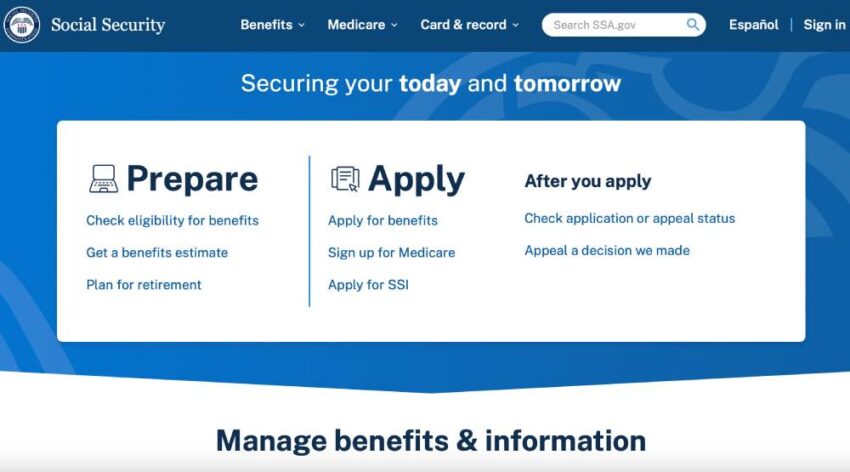Applicants with a listed condition automatically qualify for disability benefits from the Social Security Administration, if they meet the legal definition of disabled. In this post we’ll discover what conditions automatically qualify you for disability.
For Social Security Disability Insurance purposes, applicants are disabled if a permanent medical condition prevents them from working. We’ll break down these requirements, focusing on medical conditions, in this post.
Permanent Condition
SSDI benefits are available if the applicant has a permanent condition, or a medical condition doctors expect to last more than a year, or that doctors believe is terminal.
Assume Rex breaks his leg in a car accident. Car crash broken legs are usually very severe. Normally, victims hit their legs on dashboards or other solid objects. That impact normally shatters their bones.
Therefore, Rex cannot work for three months. Lingering serious pain, along with his physical therapy requirements, prevent him from working full time for another three months.
Based on the broken leg alone, Rex is ineligible for SSDI benefits. He could probably successfully sue the other driver for negligence, but that’s the subject of a different blog.
Rex’s eligibility could change over time. Assume he permanently loses most of the range of motion in his knee. Further assume his lost mobility causes a deep depression.
As outlined below, depression is a condition that automatically qualifies you for disability. If available medical treatments, mostly drugs, don’t manage his depression, Rex qualifies for SSDI benefits.
Usually, the SSA schedules annual re-evaluations to determine if the applicant’s condition has improved to the point that s/he’s employable.
Unable to Work
A disability is not just a medical condition. A serious breathing condition, like emphysema or asthma, disables a miner. But such a condition probably doesn’t disable an accounting clerk for a mining company.
Additionally, applicants must prove they cannot work other jobs. For this reason, young and well-educated people rarely receive disability benefits.
One of our colleagues practiced dentistry for many years. He badly hurt his hand in an accident and couldn’t practice anymore. A Claims Examiner ruled he had other career options and was therefore ineligible for SSDI. So, he became a lawyer.
Claims Examiners focus on theoretical possibilities. Attorneys usually partner with vocational experts who testify about a claimant’s practical likelihood of obtaining another job, given the market conditions and other factors at the time.

Social Security – What Conditions Automatically Qualify You for Disability?
Any permanent, disabling medical condition qualifies for SSDI benefits. Streamlined approval if the applicant has one of the following illnesses and meets the other qualifications:
- Congestive Heart Failure,
- Fibromyalgia,
- Lupus,
- Reflex Sympathetic Dystrophy (RSD),
- Multiple Sclerosis (MS),
- Chronic Headaches,
- Bipolar Disorder,
- Asthma,
- Emphysema,
- Huntington’s Disease,
- Musculoskeletal Disorder,
- Diabetes,
- Cancer,
- Depression,
- High Blood Pressure,
- Rheumatoid Arthritis,
- Anxiety Disorder,
- Chronic Fatigue Syndrome,and
- Post-Traumatic Stress Disorder (PTSD).
Frequently, SSA doctors go out of their way to avoid presumptive condition diagnosis. For example, if Alic has PTSD, her SSA doctor might claim she has anxiety. Alice is still eligible for benefits, but the process is more complex.
Sometimes, this misdirection is unintentional. Alice might see an SSA doctor who focuses on autoimmune disorders, like lupus, and knows little about head injuries, such as PTSD.
For these reasons, most attorneys arrange for independent medical examinations. IME reports are especially important at Administrative Law Judge appeal hearings.
Furthermore, if medication or another medical treatment is available, Claims Examiners often reject disability claims, even if the applicant otherwise qualifies.
Available medication is different from available treatment. Let’s stay with PTSD. Various drugs are available which treat some symptoms. But these powerful drugs have powerful side-effects, so not everyone can tolerate these drugs.
On a related note, the disability could be indirect. If Al’s PTSD nightmares keep him awake, he cannot effectively function the next day.
FAQ
What are the most approved disabilities?
The most frequently approved disabilities often include musculoskeletal system disorders, such as back injuries, as well as mental disorders like depression, anxiety, and certain cognitive impairments.
What are the criteria for disability?
The criteria for disability typically include having a medical condition that significantly impairs one’s ability to perform basic work activities, is expected to last at least one year or result in death, and is documented by medical evidence.
Does anxiety and depression qualify for disability?
Yes, anxiety and depression can qualify as disabilities if they are severe enough to prevent an individual from maintaining gainful employment and meet the criteria set by the disability program they are applying for.
What disabilities are hard to prove?
Disabilities that are hard to prove often include chronic pain conditions, mental illnesses, fibromyalgia, and other conditions with symptoms that are subjective or not easily measured by objective medical testing.
What are the 4 main types of disabilities?
The four main types of disabilities are physical, intellectual, sensory, and mental health disabilities.
What gives 100% disability?
A 100% disability rating is typically given for conditions that completely impair an individual’s ability to engage in any substantial gainful activity and often reflects the severity and impact of the disability on daily living.
What’s the fastest you can get approved for disability?
The time frame for disability approval can vary widely, but some programs like the Social Security Administration’s Compassionate Allowances program can expedite the process for certain conditions, potentially resulting in approval within a few weeks to a couple of months.

